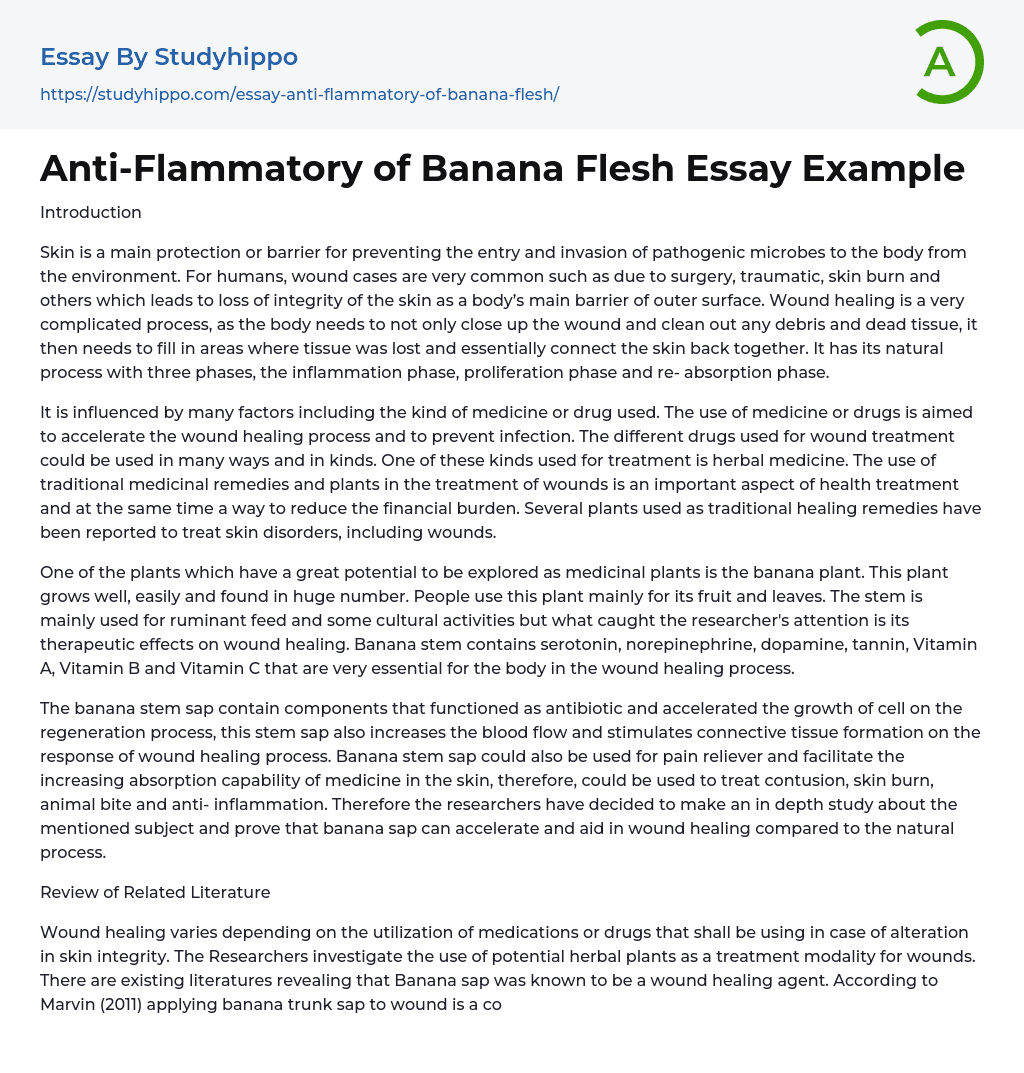
Introduction
The skin acts as the main defense mechanism against harmful microorganisms present in the environment.
The human body often encounters wounds caused by surgery, trauma, skin burns, and other factors. These wounds result in the loss of skin integrity, which is essential for protecting the outer surface of the body. Wound healing is a complex process that involves closing the wound, eliminating debris and dead tissue, and filling in areas where tissue has been lost to reconnect the skin. This natural process consists of three phases: inflammation, proliferation, and re-absorption. Numerous factors such as medication or drugs can affect this process.
The aim of utilizing medicine or drugs is to quicken the healing process and prevent infections in wounds. Various drugs for treating wounds can be used in different ways, such as through herbal medicine that involves tradition
...al medicinal remedies and plants. Incorporating these methods into wound treatment is not only important for healthcare but also helps reduce financial burden.
Various plants utilized in traditional medicine possess therapeutic properties for treating skin disorders and wounds. Among them, the banana plant stands out as a promising option due to its widespread availability and simple cultivation process. Although both the fruit and leaves are commonly used, researchers have specifically directed their attention towards exploring the healing potential of the banana plant's stem.
Banana stem is abundant in serotonin, norepinephrine, dopamine, tannin, Vitamin A, Vitamin B, and Vitamin C. These substances play a crucial role in the body's wound healing process. The sap of the banana stem contains antibiotic components that support cell growth and facilitate regeneration. It also improves blood flow and promotes connective tissue formatio
during wound healing. Furthermore, the banana stem sap possesses pain-relieving properties and enhances medicine absorption into the skin. This makes it an effective treatment for contusions, skin burns, animal bites, and inflammation. Researchers have extensively studied these benefits to demonstrate that banana sap can expedite and assist in wound healing compared to natural methods.
Review of Related Literature
The Researchers are exploring the use of herbal plants as a treatment for wounds. Wound healing is influenced by the use of medications or drugs. Previous studies have shown that Banana sap has been used as a healing agent for wounds. Marvin (2011) noted that applying banana trunk sap to wounds was a common practice in the past, but it was later replaced by liquid iodine formulations like povidone iodine.
The use of a popular wound medicine can be painlessly applied to any wound. A true experiment was conducted to determine the effectiveness of using banana sap in speeding up the healing process of incisions. The results concluded that banana sap was more effective in accelerating the healing process and reducing the risk of infection (Sasongko, 2008). Based on experience, it is noted that the banana sap is highly useful. Applying it to a wound helps stop bleeding, as the sap contains saponin and ascorbic acid. These substances aid in faster wound healing (Marvin, 2011).
"Saponin stimulates the formation of new blood vessels in wounds, enhancing the supply of oxygen and nutrients. Ascorbic acid accelerates connective tissue growth, particularly collagen" (Nugrohoro, 2011). According to Estiara (2010), wounds treated with an 80% concentration of sap from banana trees close 30-60% faster. Bananas are a rich
source of vitamin B6, which aids in neurotransmitter production such as serotonin and gamma-amino butyric acid (GABA). They also contain significant amounts of vitamin C and essential B-group vitamins like folate, niacin, riboflavin, and pantothenic acid - all crucial for wound healing (Drucker, 2004). Different parts of a banana tree, including its trunk and mashed ripe peels can be utilized for wound healing. Banana peel possesses antiseptic properties that make it suitable for direct application on wounds or cuts during emergencies (Sharrock, 1996, p.42)."
Research was conducted to investigate the effects of banana sap on wound healing in mice. The goal of this study was to observe the activity of banana stem sap in speeding up the wound healing process in mice, through both gross and histopathological observations. A total of 45 DDY mice, aged 4-6 weeks, were used in this experiment and divided into three groups: negative control, positive control, and banana stem sap. Each mouse was incised with a 1-1.5cm cut on their dorsal back skin. The results of the experiment showed that banana stem sap was able to enhance the wound healing process. The observation of gross lesions revealed that scab formation occurred faster in the group treated with banana stem sap, compared to the negative control and Bio placentation groups. (Beiheft, 1990, p.)
32).
- Microbiology essays
- Bacteria essays
- Cell essays
- Enzyme essays
- Photosynthesis essays
- Plant essays
- Natural Selection essays
- Protein essays
- Viruses essays
- Cell Membrane essays
- Human essays
- Stem Cell essays
- Breeding essays
- Biotechnology essays
- Cystic Fibrosis essays
- Tree essays
- Seed essays
- Coronavirus essays
- Zika Virus essays
- Cloning essays
- Medical Ethics essays
- Patient essays
- Therapy essays
- drugs essays
- Cannabis essays
- Aspirin essays
- Cardiology essays
- Hemoglobin essays
- Pharmacology essays
- Surgery essays
- alternative medicine essays
- Plastic Surgery essays
- Organ Donation essays
- Vaccines essays
- Medical essays
- Dentist essays
- Psychological Trauma essays
- Physical therapy essays
- Cold essays
- Cocaine essays
- Why Marijuana Should Be Legalized essays
- Drug Abuse essays
- Teenage Drug Abuse essays
- Heart Disease essays
- Artery essays
- John Locke essays
- 9/11 essays
- A Good Teacher essays
- A Healthy Diet essays
- A Modest Proposal essays



